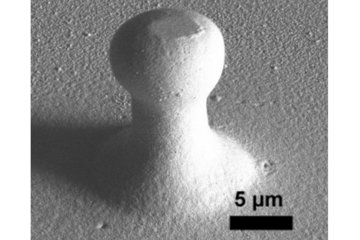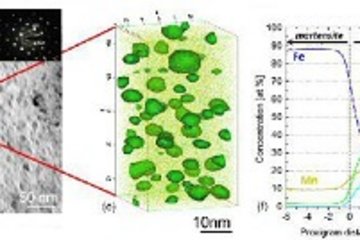All genres
881.
Journal Article
Experimental study on the thermal stability of Cr filaments in a Cu–Cr–Ag in situ composite. Scripta Materialia 51, pp. 915 - 920 (2004)
882.
Journal Article
Using texture components in crystal plasticity finite element simulations. International Journal of Plasticity 20, pp. 339 - 361 (2004)
883.
Journal Article
Comparison of Single Crystal Simple Shear Deformation Experiments with Crystal Plasticity Finite Element Simulations. Advanced Engineering Materials 6, 8, pp. 653 - 656 (2004)
884.
Journal Article
Annealing effects on the microstructure and texture of a multifilamentary Cu–Nb composite wire. Scripta Materialia 51, pp. 1099 - 1104 (2004)
885.
Journal Article
Effects of Topology on Abnormal Grain Growth in Silicon Steel. Acta Materialia 51, pp. 1755 - 1765 (2003)
886.
Journal Article
Deformation Behaviour of Aluminium-Bicrystals. Advanced Engineering Materials 5, No.8, pp. 563 - 566 (2003)
887.
Journal Article
Mosaic Size Distributions in an Aluminum Bi-crystal Deformed by Channel Die Plane Strain Compression. Journal of Neutron Research 11 (4), pp. 209 - 214 (2003)
888.
Journal Article
Overview on basic types of hot rolling textures of steels. Steel Research 74, pp. 327 - 337 (2003)
889.
Journal Article
A New Finite Element Method for Predicting Anisotropy of Steels. Steel Research 74, pp. 181 - 182 (2003)
890.
Journal Article
Grain-scale micromechanics of polycrystal surfaces during plastic straining. Acta Materialia 51, pp. 1539 - 1560 (2003)
891.
Journal Article
High resolution EBSD investigation of deformed and partially recrystallized IF steel. Advanced Engineering Materials 5, No.8, pp. 566 - 570 (2003)
892.
Journal Article
On the influence of the grain boundary misorientation on the plastic deformation of aluminum bicrystals. Acta Materialia 51, pp. 4719 - 4735 (2003)
893.
Journal Article
Don’t trust your simulation - Computational materials science on its way to maturity? Advanced Engineering Materials 4 (5), pp. 255 - 267 (2002)
894.
Journal Article
Theory of orientation gradients in plastically strained crystals. Acta Materialia 50 (2), pp. 421 - 440 (2002)
895.
Journal Article
Abnormal grain growth in silicon steel. Proc. ICOTOM 13, pp. 949 - 954 (2002)
896.
Journal Article
Orientation dependence of recrystallization in aluminium. Proc. ICOTOM 13, pp. 773 - 778 (2002)
897.
Journal Article
Finite element simulation of grain interaction and orientation fragmentation during plastic deformation of BCC metals. Proc. ICOTOM 13, pp. 371 - 376 (2002)
898.
Journal Article
Cellular automata in materials science with particular reference to recrystallization simulation. Annual Review of Materials Research 32, pp. 53 - 76 (2002)
899.
Journal Article
Challenges in computational materials science. Advanced Materials 14, pp. 639 - 650 (2002)
900.
Journal Article
Texture component crystal plasticity finite element method for scalable large strain anisotropy simulations. Proc. ICOTOM 13, pp. 257 - 262 (2002)











